ISSN: 2511-7602
Journal for Art Market Studies
ISSN: 2511-7602
Journal for Art Market Studies
Nick Pearce
A commemorative medal in the Hunterian, University of Glasgow, marks Danish journalist and adventurer, Frits Holm’s (1881–1930) attempt to remove in 1908 a monument recording the first arrival of Nestorian Christianity in China (AD.635). Unsuccessful in his attempt at its removal, Holm commissioned a replica of the stele in local stone, carved directly from the original and shipped it to New York, where, for ten years, it was displayed in the Metropolitan Museum of Art. Even at the time it was questioned whether a copy had any artistic merit, but such was the Nestorian stele’s fame as a Christian document that it ended up in the Vatican Museum and was itself a source from which cast copies were made and distributed around the world. The paper discusses Frits Holm’s ‘adventure’, which provided him with the perfect opportunity for self-promotion, and addresses the position of the copy to collecting practices, especially by Westerners in China during the first decades of the twentieth century. Despite his efforts, Holm could never escape his failure to acquire the original object.
This article takes as its departure a commemorative medal in the collection of the Hunterian, University of Glasgow (fig.1). The medal provides a vehicle for analyzing both an event, or more properly a series of events, surrounding an object of some celebrity, the so-called Nestorian monument or stele, and the unsuccessful attempt to remove it from China, and the position of the replica or copy as an object of artistic and commercial value: the definition of value being the perceived worth or importance as a work of art.1
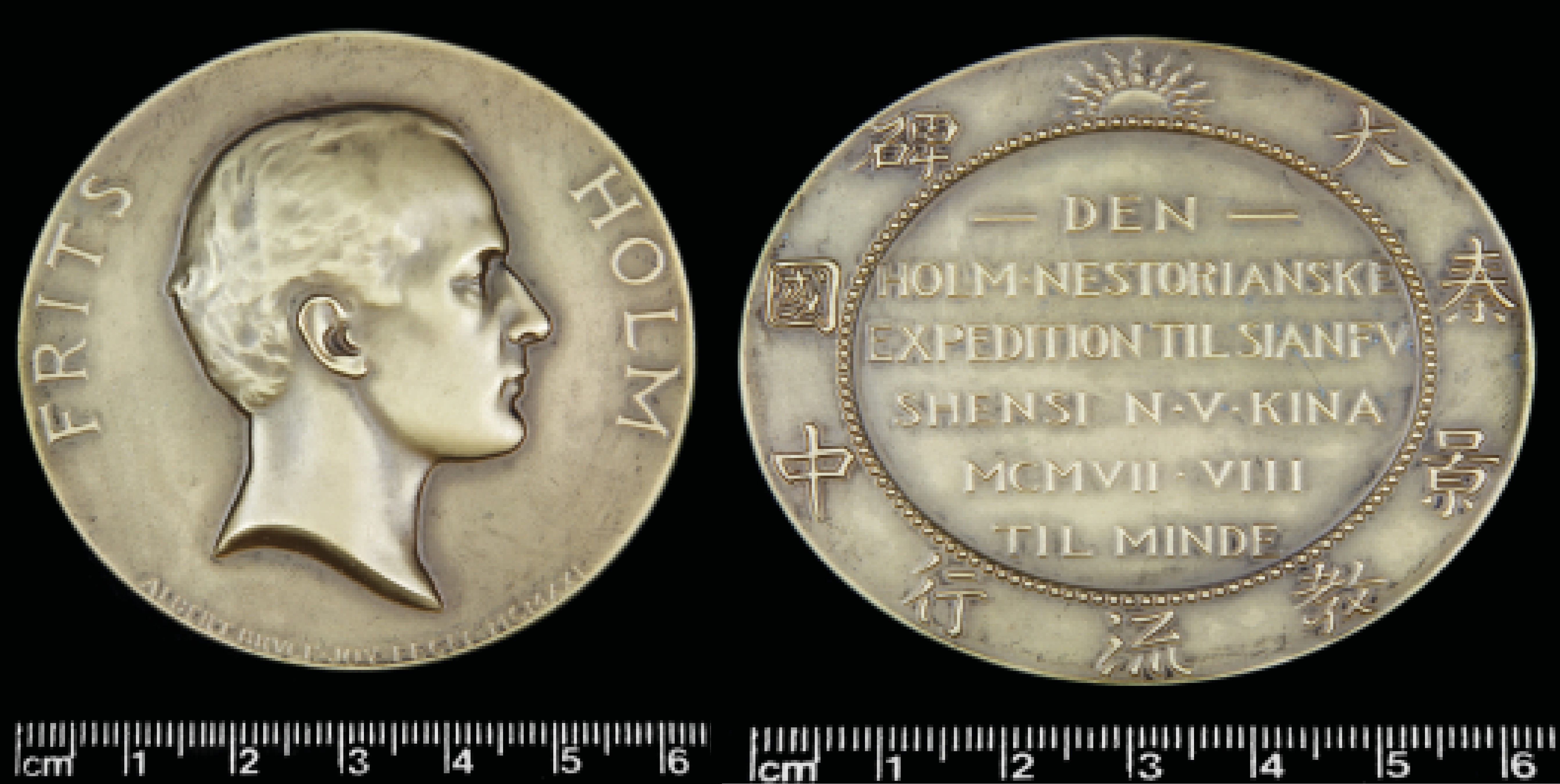
Fig.1: Medal Commemorating Frits Holm’s Expedition to China to ‘acquire’ the Nestorian Stele in 1907. Designed by Albert Bruce-Joy (1842-1937), bronze, 1921. The Hunterian, University of Glasgow, gifted by Mrs. Holm, 1923.
Appearing on the obverse of the commemorative medal is a profile bust of Frits Holm (1881–1930), and below this the name of Albert Bruce-Joy (1842-1924), an Irish-born sculptor, known for his medal designs, together with the date, 1921. On the reverse, at the centre written in Danish: ‘Holm Nestorian Expedition to Sianfu, Shansi, North-West China, 1907-08. In memory’. Around the edge going clockwise are the Chinese characters for Da qin jing jiao liu xing zhong guo bei: 大秦景教流行中國碑 (A Monument Commemorating the Propagation of the Luminous Religion in China).
The medal commemorates the Danish journalist and adventurer, Frits Holm’s attempt in 1907 to remove to a museum in the West the monument or stele recording the first arrival of Nestorian Christianity in China in AD.635 (fig.2).2 According to an inscription on the stele, it had been erected in AD.781 near the old capital of China, Xi’an, but buried some decades later (probably in the ninth century when there was a ban on all foreign religions).3 It was rediscovered in 1625 when local workmen were digging foundations for a wall. The monument itself (碑, bei) follows a form established in the first century AD, for funerary and commemorative purposes. They were usually commissioned by a group or community and could be religious or secular.4 These monuments usually consist of a rectangular slab divided into three sections: the head (碑首, beishou), the body (碑身, beishen) and the base (碑趺, beifu). The head in this case has entwined dragons (螭首, chishou), with the rectangular base surmounted on a turtle (龜趺, guifu, symbolic of longevity). The centre of the monument displays a lengthy one thousand seven hundred and fifty six Chinese character inscription, with, at the base, some seventy words in Syriac. It was this inscription that was almost immediately documented and translated first by Jesuit, then Protestant, missionaries and sinologists, making the monument over the following centuries both the subject of contentious debate, primarily in the West and eventually held up to be as important a find as the Rosetta Stone and the Moabite and Aztec Calendar Stones – that is according to Frits Holm.5

Fig.2: The Nestorian Monument as photographed by Frits Holm in 1907. Reproduced in Edgar Johnson Goodspeed, The Nestorian Tablet, in The Biblical World, 33, 4 (1909), 280.
The nine Chinese characters on the reverse of our medal are taken directly from the engraved title on the stele, but the bulk of the inscription on the stele consists of thirty columns of about sixty characters each describing the creation, the coming of a Messiah figure born of a Virgin and the spread of the faith following the Messiah’s return to heaven. It includes a history of the religion in China and a poem celebrating the faith and the Tang dynasty (618-907 AD) emperors who supported the religion. Side and border texts in Syriac (a form of Aramaic used by Nestorians as a clerical language), list clerics associated with the church in China. At the top of the stele beneath the entwined dragons is a cross.
Within months of the stele’s rediscovery in 1625, news of it circulated widely through Jesuit reports and almost immediately the inscription was transcribed by a Chinese convert named Matthias and a Latin translation and pronunciation table made by Jesuit Michael Boym (1612-59).6 It was this transcription and table that was published and discussed by Jesuit polymath, Athanasius Kircher (1602-80), in his China Illustrata of 1667 (fig.3).7 Kircher had first discussed the Monument in his Prodromus coptus sive aegypticus (Coptic or Egyptian Forerunner), of 1636, in which he explored the relationship of Chinese to Egyptian Hieroglyphs, an important part of the Renaissance hermetic tradition that placed a primacy on ancient Greek and Egyptian culture.8
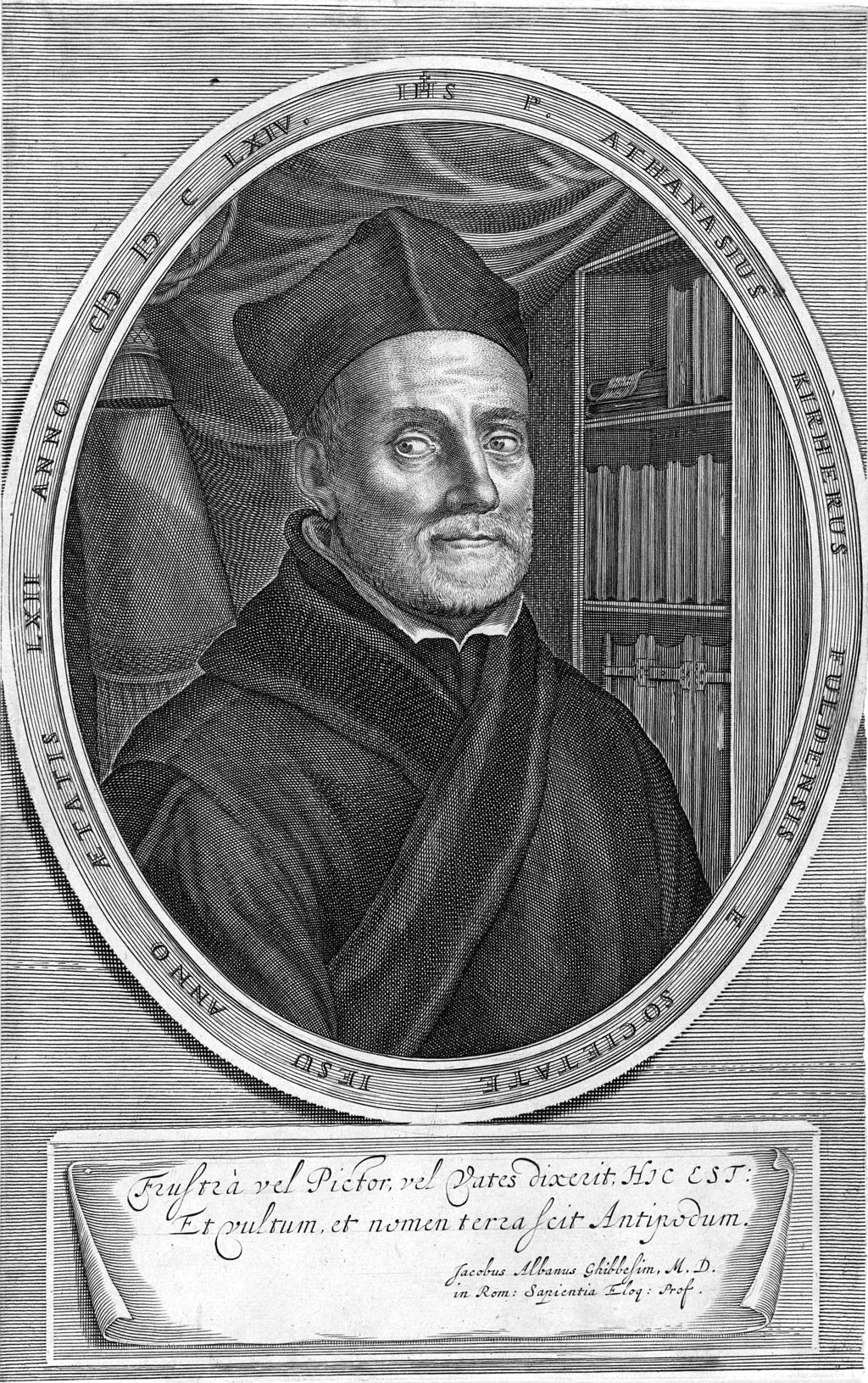
Fig.3: Athanasius Kircher (1602-80), engraving by Cornelis Bloemaert.
While the Monument documented the presence of Nestorianism in China (a heresy according to the Catholic Church), its importance for the Jesuits lay in the long-sought evidence of the early beginnings of Christianity in the country. Furthermore, as China venerated antiquity over novelty it also provided the justification back in Europe for the Jesuit project for the top-down strategy of conversion (fig.4 of frontispiece).9 However, even at the beginning, the monument would be tainted by the very involvement of those who would benefit most by its discovery: the Jesuits. Through misunderstandings (promulgated unintentionally by Kircher himself), and suspicion by Protestants missionaries, the Monument was condemned as being a forgery or at least a copy, a belief that persisted until at least the mid-nineteenth century, when with further evidence provided by Alexander Williamson (1829-90) and Alexander Wylie (1815-87), both Protestant missionaries, the accusations of fake began to subside.10
With publications from Williamson and Wylie and interest from the nascent Sinological community, the accusations of fake were replaced by calls to rescue the Monument, a familiar topos in nineteenth-century Europe in favour of the acquisition of important objects and monuments from around the world, for; after all, was this object not important evidence of the establishment of Christianity in China? By the mid-nineteenth century, the country was suffering from internal turmoil with the Taiping Rebellion (1850-64), ravaging central China, Moslem rebellions erupting in the far West along with ever-increasing encroachment by the European powers. When Alexander Williamson visited the monument in 1866, he found it in the grounds of a ruined Buddhist temple ‘...amid heaps of stones, bricks and rubbish on all sides’.11 In a letter to The Times in 1886, Shanghai newspaper editor and writer (and one of those nascent Sinologists), Frederic Henry Balfour (1846-1909), wrote that he was informed that: ‘... the celebrated Nestorian Tablet...is in process of rapid dilapidation...exposed to the air and utterly neglected by both people and officials’.12 He went on:

Fig.4: The first transcription of the Chinese and Syriac text on the Nestorian Stele. From Kircher’s China Illustrata.
Now the Chinese Government takes not the smallest interest in the preservation of this monument; indeed I doubt whether there are a hundred responsible persons in the whole of China who know or care anything about the introduction of the “Illustrious” religion, as Nestorianism was called, which it commemorates. The stone is probably to be had for the asking; indeed if a man were to go there some fine day with a dozen stalwart coolies, and cart it bodily away, I question whether any one would take the trouble to lift a finger to prevent him. Under the circumstances, might not Lord Elgin’s example with regard to the friezes of the Parthenon be followed? Would not the Nestorian Tablet be more worthily housed in the British Museum than be left to rot, unnoticed and uncared for, in a dirty Chinese town?13
A further exchange of letters about the Monument in The Times, concluded with another call, this time from Albert Etienne Terrien de Lacouperie (1844-94), then Professor of Indo-Chinese Philology at University College, London, for the ‘“..Foreign Office to obtain the stone of Signan Fu. It is a most precious monument, unique in its time, which ought to take a place among the treasures of the British Museum.”14 All this gives a context for Frits Holm’s expedition to Xi’an in 1907-08.
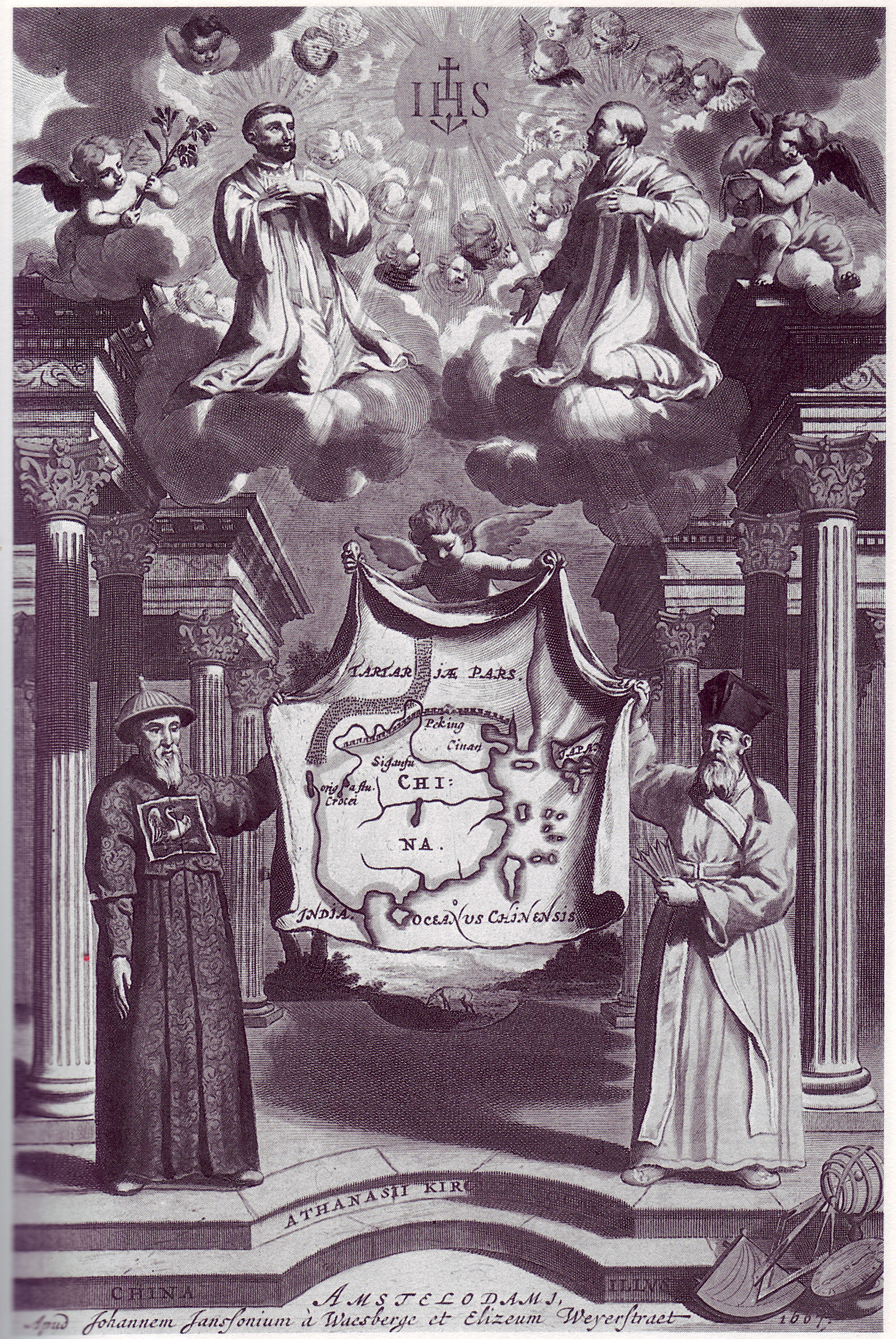
Fig.5: Frontispiece from China Illustrata, with Ignatius Loyola and Francis Xavier, founders of the Jesuit order and the mission in the East, above the portraits of Matteo Ricci and Athanasius Kircher. The inset map marks the spot of the Nestorian stele at Signan-Fu.
So who was Frits Holm and what was his mission to recover the stele? According to Holm’s own Biographical Notes, he was born in Charlottenland, Copenhagen, on 23 July 1881 to Consul-General Frederik Holm and Emma Bording. He first joined the Danish navy (1895-1900) and later worked as a journalist, including for the London Tribune in China, which took him to the Far East.15 Holm’s biography then becomes a list of diverse appointments, accomplishments and awards that read as embellishment or at least exaggeration. A clue might be gleaned once again from the commemorative medal. Although it was cast in 1921 (which was not an anniversary date of the Expedition), we know from other sources that the medal was distributed to major museums around the world in 1923, the year in which Holm published his extended account of the expedition: My Nestorian Adventure in China (fig.5).16 It had been commissioned from the Monnaie de Paris and the Medallic Art Company in New York and was probably the inspiration of Mrs. Marguerite Holm (1896-1928), who was the daughter of Warren L. Green, late President of the American Bank Note Company, whom Holm had married in 1919.17 The whole idea of commissioning a commemorative medal alongside the publication of a popular account of the expedition also points up certain characteristics of Frits Holm’s personality: his need for self-publicity that verged on the narcissistic. The Nestorian expedition provided him with the perfect opportunity for self-promotion. It was, as one commentator has written, “the defining event of his life”.18 At the end of his book: My Nestorian Adventure, in his Biographical Notes, Holm lists his awards and achievements, his decorations being numerous and emanating from the Papacy, Venezuela, Bulgaria, Greece and the Red Cross, many of them knighthoods awarded by recently exiled monarchs. In his many portrait photographs, he never missed the opportunity to display them (fig.7). The acquisition of the German “von”, a misinterpretation of the letter V for Vilhelm, which was his middle name, bestowing on him the rank of nobility, crept into many reports and was never corrected by him.19 The hyperbole that surrounded his “adventure”, made all the more dramatic in the telling, allowed Holm to present himself as the hero fighting imperial authorities and missionaries to save the Monument, even though he had no legal or moral right to assume this position.
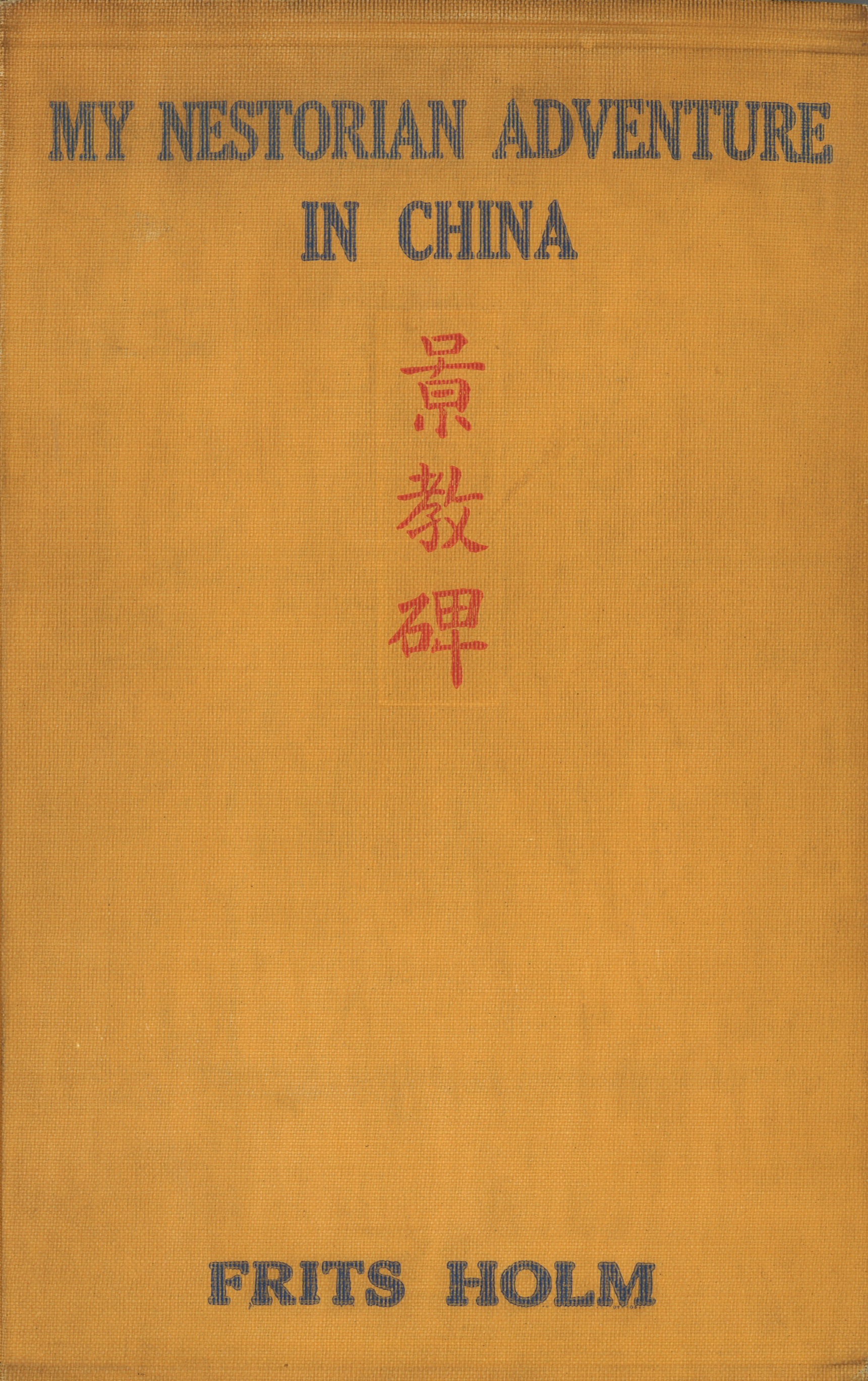
Fig.6: Cover of Frits Holm, My Nestorian Adventure in China, Fleming H. Revell Company, New York, 1923.
In Holm’s published accounts in the New York Times, The Open Court and his much later My Nestorian Adventure in China, he relates that having worked in China immediately following the Boxer Rebellion (1900), he had learned of the sorry state of the Nestorian Monument in Xi’an and on his return to Europe had made plans to remove it for the benefit of “the western scientific world.”20 His backstop plan was to have made “a perfect Replica in stone”.21 Holm arranged a meeting at the British Museum with “...a somewhat irascible elderly official” (probably the Keeper of Oriental Antiquities, Sir Wallis Budge, 1857-1934) who was less than optimistic of the likelihood of Holm’s success and doubtful of the validity of making a replica in stone, although he thought it would be “accepted” and “erected”.22 Having consulted more widely, including with Sir Casper Purdon Clarke (1846-1911), Director of the Metropolitan Museum of Art, New York and having managed to raise the necessary funds from friends and supporters in London and New York, he set about the task. Holm arrived in Beijing in April 1907 and set off westward to Xi’an on 2 May, arriving a month later.23 He made his first visit to the site on 10 June 1907 (fig.8 map).

Fig.7: Portrait of Frits Holm by Arnold Genthe wearing the Grand-Cross of the Constantinian Order of St George and other decorations. Bain Collection, Library of Congress.
Holm first endeavored to obtain the original monument. He began by building a relationship with the resident priest through regular visits and gifts, which Holm called bribes, a comment which he quickly modified:
Perhaps it isn’t quite fair to call it a bribe. The chief priest, Yü Show, was 74 years old. He had been in the temple fifty years. I gave him some silk for his Buddha. His eyesight was failing, and I offered him a magnifying glass for his reading – a rarity in those regions and highly prized.24
The priest was the least of Holm’s worries. He was, according to his various accounts, thwarted by the local missionaries, who saw the monument as theirs and not, as even Holm admitted, the property of “the Chinese nation”.25 Holm tried allaying fears by disappearing from the scene for a while, but during his absence he arranged for a replica to be made from the same local limestone found in the Fuping quarries forty-five miles north-east of Xi’an that had furnished the original.26 A slab of stone was cut and transported to a barn near the temple where a team of carvers shaped and copied the inscription, the latter operation executed using an ink rubbing taken from the original monument. According to Holm:
One artist carved the dragons, the cross and the Syriac characters. Another copied the Chinese characters. They worked almost without ceasing from daylight to dark, and finished the work in eleven days.27
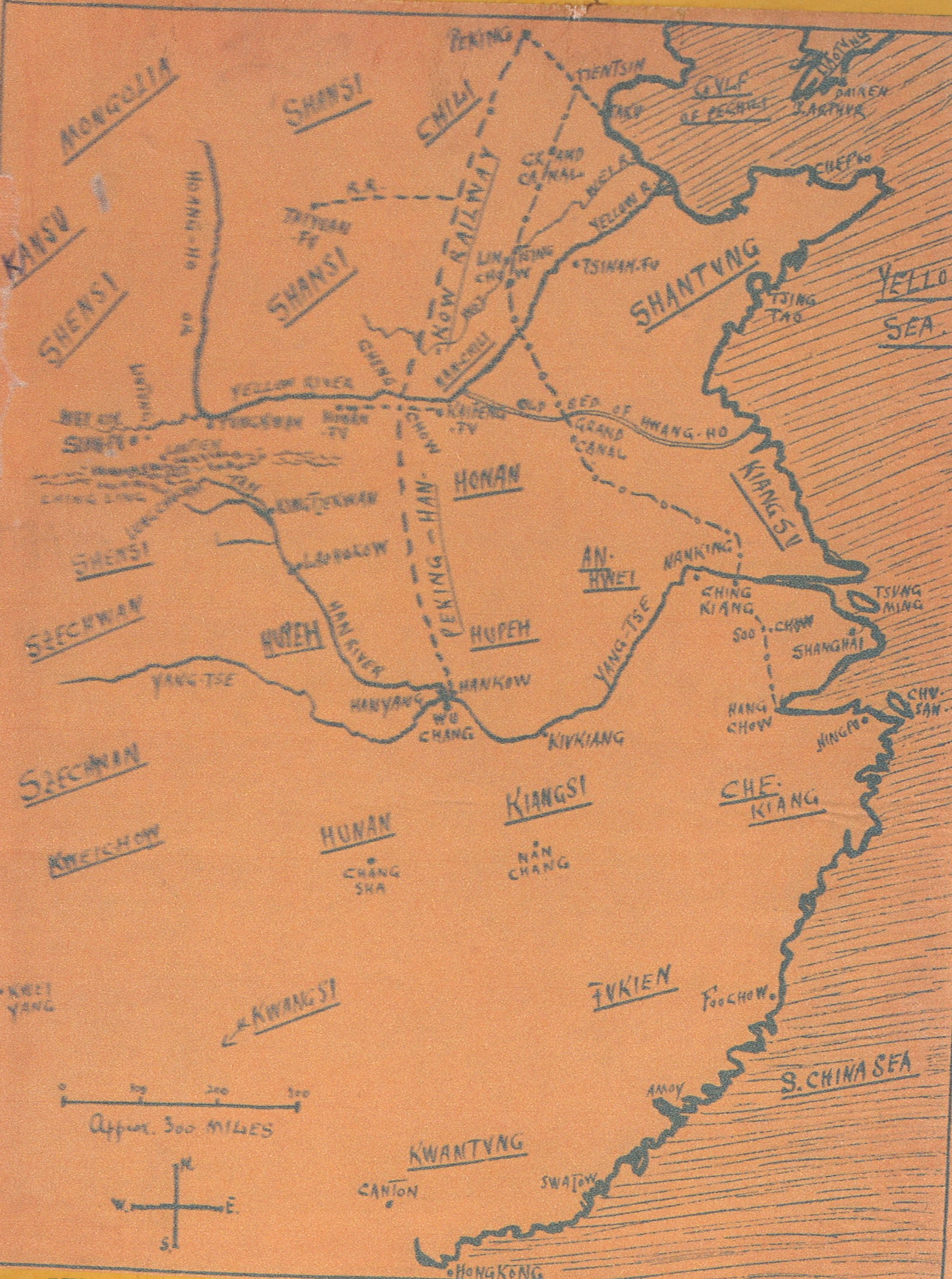
Fig.8: Holm’s hand-drawn map of his route to Xi’an in 1907, reproduced from My Nestorian Adventure.
Using the rubbing the carvers were able to complete the copy in the minutest detail: “The Chinese and Syriac letters were then picked out with needle-like chisels. Even the imperfections in the surface of the original and the dents at the edges were copied with wonderful accuracy.”28 The cost had been $35 (Taels 150) for four months work.29
By the time Holm had arranged his departure with the replica on 3 October 1907, the Chinese authorities had removed the original stele from the grounds of the temple to the Beilin (碑林), or Forest of Steles, a former Confucian temple in Xi’an city that housed a number of steles from the area and where it remains today (fig.9).30 Holm comforted himself with the idea that he had been “...the direct cause for removing the priceless Stone to a place, where it will not be exposed to wind and weather and theft...31 It took eleven men to load the ten feet high, two ton replica monument on to a cart which was then pulled by six mules across country to the Peking-Hankou Railway at Zhengzhou, over 350 miles away (fig.10). From there it travelled by train to Shanghai, a total of 1,300 miles, from where it left bound for New York, rather than London, on 29 February 1908.32 Had Holm embarked upon his quest to take the original Monument a decade or so later he might have succeeded. In 1911 the Imperial Qing dynasty collapsed and after a short period when the new Chinese Republic was in control, China was riven by warlords controlling large swathes of the country. In the cultural sphere, for more than three decades, this chaos resulted in a free-for-all in the market for Chinese artefacts with objects of all kinds flowing out of the country. Under those conditions, it is quite feasible to think of the Nestorian Monument joining the other cultural icons in the British Museum as Holm had intended.
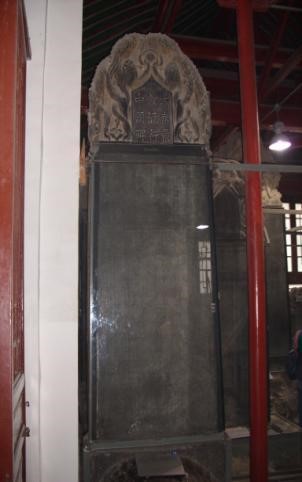
Fig.9: The Nestorian Monument in the Beilin (Forrest of Steles), Xi’an. Photo: the author.
However, the replica was now en-route for New York, not London. It was destined for the Metropolitan Museum of Art, courtesy of Sir Caspar Purdon Clarke, although not as Holm had expected as an acquisition, but as a loan. Somewhere between Holm’s endeavours to acquire the monument in one form or another and its shipment out of China, its destination had changed from London to New York, a re-route that was never clearly explained in any of Holm’s accounts. The likelihood is that Clarke was the only museum director to agree to accepting a replica over the original, although only as a gift or loan and not a purchase.33 As Holm needed to recoup the costs of the expedition a donor needed to be found, but no such donor came forward. According to Holm himself, a number of potential donors were approached, significant among them being the banker and at the time President of the Board of the Metropolitan Museum, J. Pierpont Morgan (1837-1913), the art collector Charles Lang Freer (1854-1919) and former industrialist and philanthropist, Andrew Carnegie (1835-1919), none of whom committed any funding.34 The replica was therefore accepted on loan, which lasted eight years. Holm observed, ruefully:
No one appreciated the need of securing it, when it could be inspected and examined gratis five days a week by anyone interested, and the two remaining days for a quarter...
Meanwhile, the monument remained at its appointed place in the art museum of New York, close by the entrance to the Bishop jade collection, and many were the distinguished visitors who, as time went by, came from near and far in order to inspect and admire the faithful reproduction of one of history’s most interesting inscriptions on stone.35
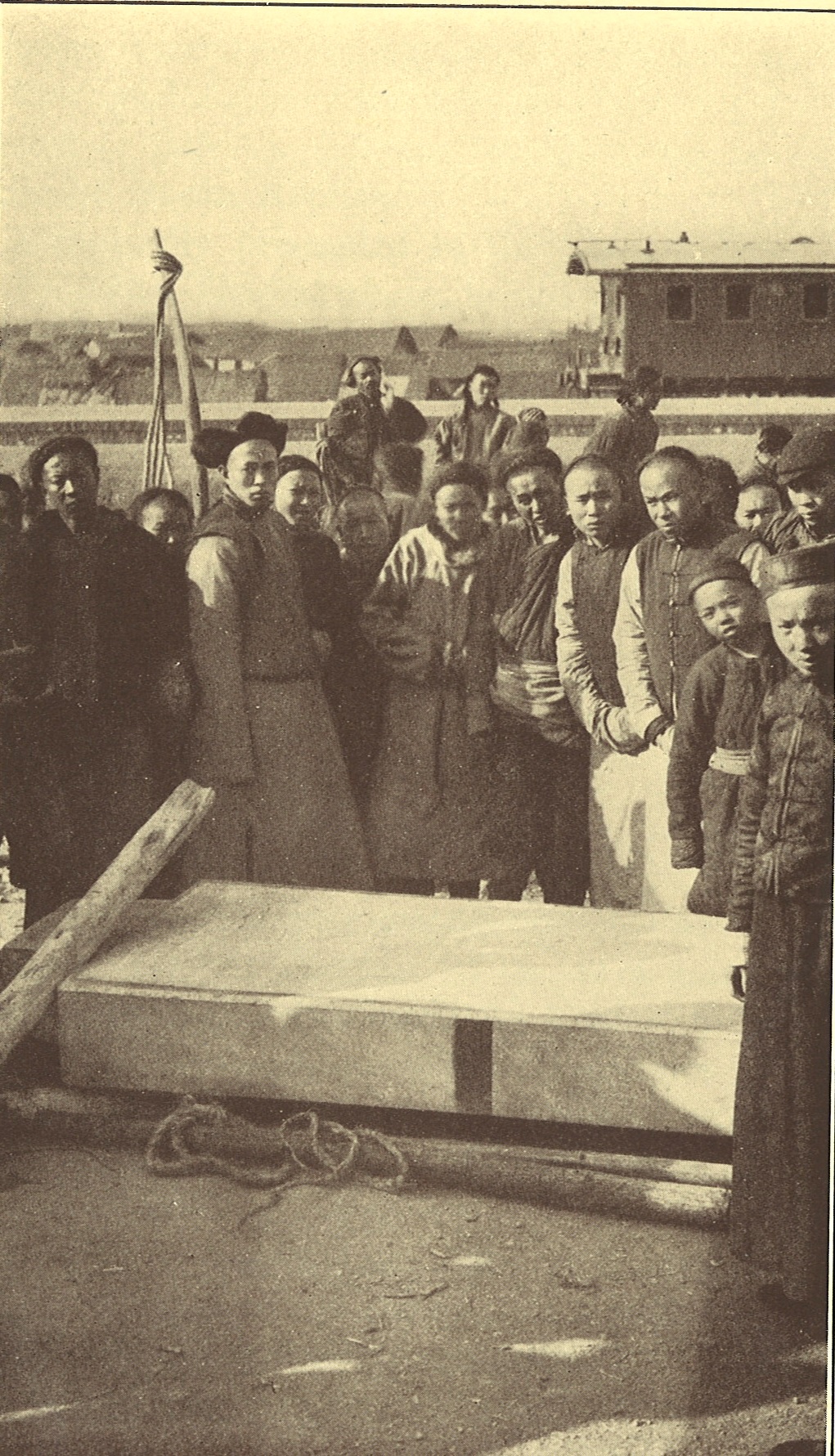
Fig.10: “Arrival of the two-ton Replica at Hankow Railway Station”. From: My Nestorian Adventure in China.
There was of course a fundamental problem that was highlighted by Caspar Purdon Clarke. In a report in the New York Times, for 24 May 1908, he remarked that although the monument was of historical value, its important text had been translated long ago and for a museum such as the Metropolitan, “the stone has little value as an art object”.36
Implicit in Clarke’s remarks, and a challenge for the Metropolitan Museum of Art, was that not only was the Monument of only historical interest with little or no artistic merit, but that it was a replica. If we adopt a basic definition of originality as being “not like anything else”, then we can understand the reluctance on the part of Clarke to commit funds to purchase a replica of the Nestorian stele when the original was still extant. Holm’s intention no doubt was to acquire an exact physical and textual representation of this monument to Christianity in China, as he was always at pains to stress that the replica was an exact copy: faithful in every aspect. It was not a rubbing (which is a different physical entity, although capturing the text very precisely), but was instead made of the exact same stone as the original (even from the same quarry) and using the exact same carving skills and materials.37 But this exactitude may have been Holm’s undoing.
Whereas a rubbing or a plaster cast has a degree of precision in capturing size, volume and content, neither process impinges upon the authority of the original in such a total way as was the use of the same materials and technique. Famously, Walter Benjamin defined the issue of genuineness and authority as understood in the West:
The genuineness of a thing is the quintessence of everything about it since its creation that can be handed down, from its material duration to the historical witness that it bears. The latter (material duration and historical witness) being grounded in the former (the thing’s genuineness), what happens in the reproduction, where the former has been removed from human perception, is that the latter also starts to wobble...what starts to wobble is the authority of the thing.38
Admittedly, Benjamin was talking about technological reproduction, but Holm’s precise material and technical copy seemingly transgresses the concept of genuineness, authority, or “aura”, as Benjamin encapsulates it, in an even more challenging way. For Holm’s replica not only used the same quarried limestone and carving techniques, but his employment of a rubbing to transfer the text also transferred the “historical witness”, in Benjamin’s language, of age and damage – the physical markers of time, which were also faithfully copied. These were all characteristics of a fake, which Holm seems not to have acknowledged. As quoted above, he reveled in the fact that “Even the imperfections in the surface of the original and the dents at the edges were copied with wonderful accuracy”. He even relates that using a complete rubbing of the original inscription confirmed its accuracy:
... I sat down to the exacting task of comparing the original text with the facsimile; and although I worked conscientiously with lens and print for hours, I was unable to find a single error.
I next applied my inch-scale and found the dimensions were accurate practically to a millimeter. This was very encouraging indeed, and I returned to town in high spirits.39
In China the copy had a very different status in that an important work might readily be reproduced over time, particularly where the original has not survived.40 It might incorporate slight differences that reflected the character of its creator, but could also be a precise tracing copy. But copying in this context was largely the preserve of the high arts of calligraphy and painting. Furthermore, as I have written elsewhere, “the Chinese understanding of the idea of production and reproduction was systemic, not mimetic,” acknowledging a common source for things, artistic or otherwise.41 This concept comes closer to what George Kubler terms “the Prime Object”, where the Nestorian stele would itself be deemed a copy of a simple standing stone and not original at all.42
In one sense Holm rightly recognized the primacy of the text and here he aligned with Chinese priorities, for while sculpture in Europe was a fine art, in China, it had no such status. Steles were the work of craftsmen, not artists and had either a religious purpose, like the Nestorian and many more Buddhist monuments which could include images as well as text, or were didactic, positioned in a public place and carrying the Chinese Classics, memorials or the writing of renowned calligraphers. In the Chinese context they might indeed be replicated and this happened in the case of imperially sponsored stelae, which were often made in duplicates and set up in various cities.43 In addition, important stones might be duplicated to protect or preserve the original or portions of it re-cut. In recent years, the title caption of the Nestorian Monument itself has been re-cut to protect it and allow rubbings to continue to be taken.44
Paradoxically, what was of importance for Holm and those advocates for the monument in the West was the textual evidence it provided – a preoccupation that had driven Western interest for centuries – but it was just this that was undermined by his obsession to have a precise replica made. The traditional Chinese rubbing – defined as an ink-on-paper representation of intaglio and relief inscriptions or designs on metal, stone, or other firm substances – would have served the purpose perfectly well, but would not have created the sensation that Holm intended. Rubbings of the Nestorian stele were two-a-penny and while the expedition and the process of finding a home for it was tortuous, it had its rewards: celebrity and honours for Holm, if only for a brief instant, which the return of anything but the Stone itself, or the nearest thing, would not have realized.
While the Monument was at the Metropolitan Museum Holm continued to promote it and his adventure through speaking engagements and arranged for casts to be made and distributed to a dozen universities and museums around the world – including Yale University (fig.11) and the Musée Guimet in Paris.45 A plaster cast was, of course, a more acceptable medium for all the reasons outlined above and followed a tradition of replication of classical sculpture long accepted in the West. However, in 1916 the Metropolitan Museum rescinded the loan and Holm was forced to find an alternative home for his replica.46 Following discussions with Dr Walter Hough (1859-1935), Curator of Ethnology at the Smithsonian Institution’s National Museum of Natural History, as to whether it should enter the national collection, he was fortunate that it was then purchased by Julia May Leary, née Crofton (1870-1935), the wife of New York businessman George Leary (1868-1942) and a Catholic convert.47 Although in his My Nestorian Adventure Holm fails to mention her by name, he indicates that it was the donor who chose to present it to Pope Benedict XV (Pontiff from 1914 to 1922). Holm accompanied the Monument to Rome, sailing to Genoa on 21 October 1916, and arriving in the Capital where on 26 November he was received at an audience with Pope Benedict. The Pope honoured Mrs Leary with the title of “Lady of the Holy Sepulchre”, while Holm acknowledged the honour with which he had been invested as Knight Commander of the Order of St. Sylvester.48 The replica is now in the collection of the Ethnological Museum at the Vatican.
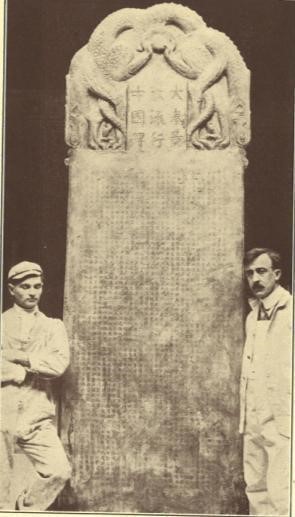
Fig.11: Full-size cast of the Replica Nestorian Monument made for Yale University. From: My Nestorian Adventure in China.
Frits Holm’s adventure in 1907 is now long forgotten and if remembered at all is seen as a misadventure rather than a successful collecting expedition. We can see Holm’s replica as falling foul of the differing conceptions of authenticity in different fields and cultures, with Holm transgressing the authority of the original by creating a copy that was materially and textually too accurate to be accepted by any art museum, let alone the market, and he seemed incapable of understanding that the Nestorian Monument was not the Rosetta Stone, carrying a text that was unknown, or in need of a key to unlock its secrets. There was little that obtaining the copy could add to the West’s knowledge of it that had not already been explored (rightly or wrongly) by the likes of Kircher or Wylie. Can we look at the personality of Holm himself as contributing to its less than favourable reception by many, compounded by his lack of academic status or official support? Did the fact that his failure to acquire the original monument at a time when significant artefacts were being taken from China – and indeed other parts of the world – into Western custody, make it an irrecoverable situation for him? By 1907, Holm and others would have been aware of the successes of earlier expeditions to western China led by Aurel Stein (1900-01), Paul Pelliot (1906) and Albert Grünwedel (1902-03), all of which may have been an inspiration for him, but which can have only have further undermined his position. Despite his efforts, Holm could never escape his failure to acquire the original object.
Nick Pearce holds the Richmond Chair of Fine Arts at the University of Glasgow.
1 The most comprehensive history of the discovery and reception of the Nestorian Monument is that by Michael Keevak, The Story of a Stele: China’s Nestorian Monument and its Reception in the West, 1625-1916 (Hong Kong: Hong Kong University Press, 2008).
2 Reference will be made to Holm’s own account throughout this article: Frits V. Holm, My Nestorian Adventure in China: A Popular Account of the Holm-Nestorian Expedition to Sian-fu and Its Results (New York: Fleming H Revell Company, 1923).
3 The so-called Great Anti-Buddhist Persecution was initiated by Tang Emperor Wuzong (814-46), in 845 AD, to cleanse China of foreign religions.
4 Dorothy C. Wong, Chinese Steles (Honolulu: University of Hawai’i Press, 2004), 26-27.
5 Holm, My Nestorian Adventure, 152.
6 Alvaro Semedo’s, Imperio de la China of 1642, translated into English as the History of the Great and Renowned Monarchy of China, in 1655.
7 Athanasius Kircher, China monumentis qua sacris quà profanis, nec non variis naturæ et artis spectaculis... illustrata... (Amsterdam: Amstelodami, 1667). For a rounded picture of this polymath, see Paula Findlen, ed., Athanasius Kircher: The Last Man Who Knew Everything (New York and London: Routledge, 2004).
8 Athanasius Kircher, Prodromus Coptus sive Aegypticus…cum linguae Coptae… (Rome: Propaganda Fide, 1636). See Keevak, The Story of a Stele, 31.
9 See Timothy Billings, Untranslation Theory: The Nestorian Stele and the Jesuit Illustration of China, in Eric Hayot, et al, eds., Sinographies: Writing China (Minneapolis and London: University of Minnesota Press, 2008), 89-114 and 91-93.
10 Alexander Williamson viewed the stele on a visit to Xi’an in 1866 and published his account in his Journeys in North China, Manchuria and Eastern Mongolia, 2 volumes (London: Smith, Elder, 1870). Alexander Wylie’s detailed account of the monument in which he invoked early Chinese sources to validate its authenticity first appeared serialised in the North-China Herald in 1854-55 and then as On the Nestorian Tablet at Se-gan Foo, in the Journal of the American Oriental Society 5 (1855-56), 275-336.
11 Williamson, Journeys, vol.1, 381.
12 Frederic Henry Balfour, The Nestorian Tablet, The Times, 21 January, 1886, 13.
13 Balfour, The Nestorian Tablet, 13.
14 Albert Terrien de Lacouperie, The Nestorian Tablet, The Times, 4 February, 1886, 14. The Times published a further letter by Lacouperie on 1 September containing support from other interested parties in having the stele preserved in the British Museum.
15 Holm, Biographical Notes’ in My Nestorian Adventure, 325-26.
16 The distribution of the medal seems to have been undertaken by Holm’s wife, Marguerite Macdonough Holm (1896-1928).
17 Chris Jones, Heads Up on Explorer’s Life, University of Sydney, Muse, 9 November 2014, 2.
18 Jones, Heads Up, 2.
19 The appellation “von” seems first to appear in the Shanghai newspaper reports and re-appeared in the New York Times. This German association may have backfired on Holm. Chris Jones claims that after the passing of the Aliens Act in the US in 1917, he attracted the attention of the FBI who suspected him as a spy (Heads Up, 2). The exiled King Nicholas I of Montenegro allegedly created him Duke of Kolachine in 1919, although this and similar uncorroborated titles do not appear in the biography to My Nestorian Adventure. When he died of pneumonia on 9 March 1930, many papers titled him “Prince”. They also relate that on the same day he died he had inherited £1,000,000, presumably from his wife’s estate. She had sadly died on 16 November 1928. See Death of Danish Prince. End of a Distinguished Career. Inherited £1000,000 Same Day, Patea Mail, 14 March 1930, 4.
20 Holm, My Nestorian Adventure, 24. Holm managed a detailed report in The New York Times Magazine: The Nestorian Stone’s Message of Centuries, The New York Times, 12 July 1908, 6 (facilitated with helpful questions by the writer, Asa Steele) and in the religious periodical edited by Paul Carus, The Open Court: The Holm-Nestorian Expedition to Sian MCMVII, January 1909, 18-28.
21 Holm, My Nestorian Adventure, 24.
22 Holm, My Nestorian Adventure, 24.
23 Ibid, p.129.See also Open Court, 26. Holm claimed that the Expedition cost $14,000.
24 The Nestorian Stone’s Message, 6.
25 Holm, My Nestorian Adventure, 156.
26 Holm, My Nestorian Adventure, 212.
27 The Nestorian Stone’s Message, 6.
28 The Nestorian Stone’s Message, 6.
29 The Nestorian Stone’s Message, 6. The figure of 150 taels was first quoted in the Shanghai Times, 26 February 1908, 135 and this was republished in a long report in Chronique, T’oung Pao, Second Series, 9, 2 (1908), 289-92, 291.
30 The temple site was built in 1087 initially to house the stone steles carrying the text of the Chinese Classics, carved during the reign of the Tang Emperor, Wenzong (809-40AD). It became a museum in 1944 and named the Shaanxi Provincial Museum in 1955. It was renamed the Beilin in 1992, when the new and separate Shaanxi History Museum was opened.
31 Holm, My Nestorian Adventure, 266.
32 Holm, The Holm-Nestorian Expedition, 28.
33 Clarke had previously been Director of the Victoria & Albert Museum, where at least plaster casts were an accepted medium for museum display.
34 Holm, My Nestorian Adventure, 306. Clarke retired in 1910 and his successor as Director, Edward Robinson (1858-1931), expressed little interest in the Monument.
35 Holm, My Nestorian Adventure, 308.
36 May Buy Nestorian Stone, New York Times, 24 May, 1908, 1.
37 The Shanghai Times report called it: “an absolutely perfect facsimile of the famous monument” (289).
38 Walter Benjamin, The Work of Art in the Age of Mechanical Reproduction, 1936 (London: Penguin Books, 2008), 7.
39 Holm, My Nestorian Adventure, 284.
40 For a discussion of the practice of copying in the context of calligraphy, see Lothar Ledderose, Chinese Calligraphy: Its Aesthetic Dimension and Social Function, in Orientations, 17, 10 (October 1986), 35-50, especially 46-50.
41 Nick Pearce, Introduction, in Nick Pearce and Jason Steuber, eds., Original Intentions: Essays on Production, Reproduction and Interpretation in the Arts of China (Gainesville: University Press of Florida, 2012), 1.
42 George Kubler, The Shape of Time: Remarks on the History of Things (New Haven and London: Yale University Press, 1962), 35-47.
43 A good example of these were the stelae erected throughout the empire by the Kangxi (1662-1722) and Qianlong (1736-95) Emperors to celebrate their military victories over the Zunghar Mongols. The marking of imperial success and rule dated back centuries in China.
44 See Kenneth Starr, Black Tigers: A Grammar of Chinese Rubbings (Seattle and London: University of Washington Press, 2008), 192-93.
45 For the Guimet copy, see Jean-Paul Desroches, From Beijing to Versailles: Asiatic Relations Between China and France (Hong Kong: Hong Kong Museum of Art, 1997), 111-112. It was gifted by Frits Holm in 1921.
46 It was taken off display in the Summer of 1916. Holm, My Nestorian Adventure, 318-19.
47 The Nestorian Monument in Rome, The Open Court, 3, 10 (1917), 189.
48 The Nestorian Monument, 189.